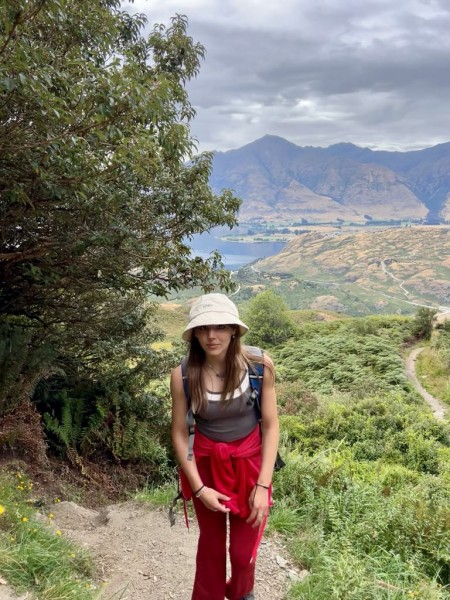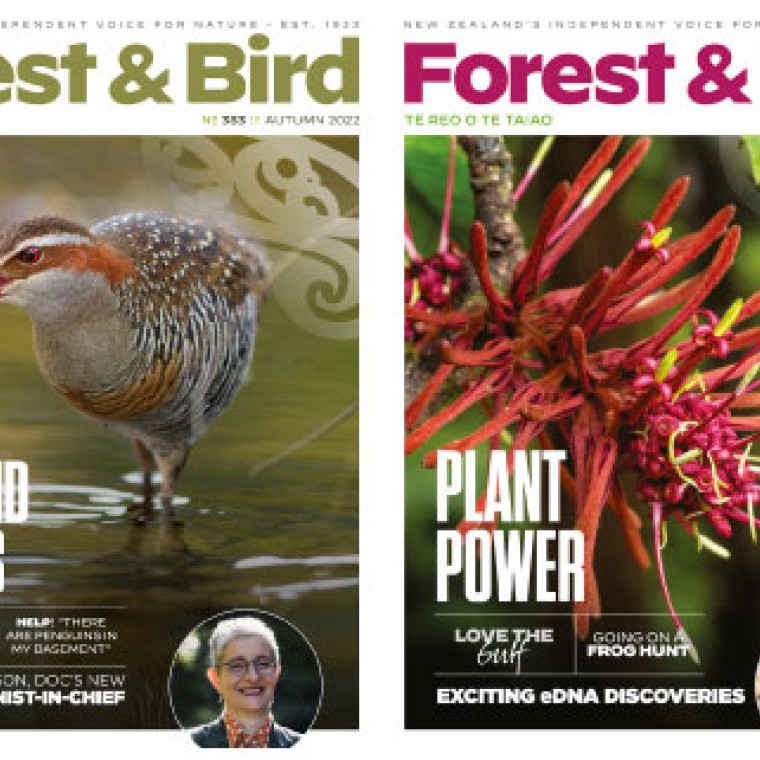Nora Paicu is a leader of the Ōtepoti Dunedin Hub of Forest & Bird Youth. She's always loved volunteering and protecting the environment – and is driven by a deep passion for preserving what matters. Nora says nature has shaped who she is and thinks one of our biggest priorities is climate action.
What’s your story? What’s your whakapapa, and what has your life journey been?
Kia ora! My name is Nora Paicu. I was born in Melbourne, Australia, and moved to Dunedin during my high school years at Columba College. Now, I’m studying Law, Management, and Agricultural Innovation at the University of Otago while training as a Maritime Operations Rating in the Royal New Zealand Navy and working as the main office receptionist at the Otago University Students’ Association.
Throughout high school, I embraced leadership, serving as a community and environmental prefect, head librarian and tennis captain as well as taking on various roles that fuelled my passion for making a difference. I joined Forest & Bird Youth in Year 10 and am now the Ōtepoti Dunedin Hub leader, continuing my commitment to conservation and advocacy.
Along with this, I am in multiple executive roles within Otago University clubs. I’ve always loved volunteering, protecting the environment, and supporting my community. Whether it’s planting native species, caring for wildlife, or empowering others, I’m driven by a deep passion for preserving what matters – both in nature and in the people around me.
What is your first memory of nature? How did you first get involved with environmental work?

Nora hiking in the hills.
One of my earliest memories of nature is exploring the native bush of Mount Waverley in Melbourne, where my childhood home backed onto a lush native reserve. I spent countless hours immersed in its greenery, developing a deep appreciation for the natural world.
From a young age, I helped my mum care for baby rainbow lorikeets that had fallen from their nests during heat waves and thunderstorms. Together, we nurtured them until they were strong enough to return to the wild. My love for conservation also grew through family outings to Damper Creek Reserve, where we took part in native plantings – an experience that sparked my passion for growing and restoring native flora. At home, I delighted in growing snow peas on our balcony, fascinated by the process of nurturing life from the soil.
When I arrived in Dunedin, I felt an immediate connection to Aotearoa New Zealand’s unique landscapes and wildlife. My environmental journey deepened as I began volunteering with Forest & Bird, contributing to conservation projects and even organising a native planting event for primary school students. These experiences reinforced my understanding of just how vital it is to protect and care for our environment and encourage the younger generation to do so too.
Nature has shaped who I am, and my commitment to its preservation continues to grow with every step of my journey.
When did Forest & Bird Youth enter your radar? When did you become a Forest & Bird Youth Hub leader?
I became aware of Forest & Bird Youth during high school at an Enviro Club meeting. I joined Forest and Bird Youth Southern Hub (now the Ōtepoti Dunedin Hub) at its beginning stages and became a leader early on. I loved the idea of young people taking charge and making real change for the conservation of New Zealand’s environment and wildlife. My involvement deepened over the years; I grew kōwhai and harakeke plants from seed and donated them to my community, and I took on leadership roles to help run projects and empower other young people to get involved.
You are a leader in the Ōtepoti Dunedin Hub of Forest & Bird Youth – what is your role and vision for the Hub?
As a leader in the Ōtepoti Dunedin Hub of Forest & Bird Youth, my role is to empower young people to take meaningful action for conservation. My vision is to build a strong, connected group of rangatahi who are passionate about restoring native habitats, planting native species, and protecting wildlife. I want to see more young people stepping into leadership roles – feeling confident in their ability to make a real difference – both in their communities and in national conversations about environmental protection.
What Hub project are you most excited about? What are you working on?

Nora at the Royal Albatross Centre in Harington Point in Otago.
One of the Forest & Bird Youth southern projects I’m most excited about is supporting Forest & Bird's Dunedin branch with restoration efforts in the Catlins – planting native species, weeding, and helping to revive local ecosystems. It’s a hands-on way to make a real impact while also inspiring and educating others about conservation.
Right now, I’m focused on strengthening connections between Forest & Bird Dunedin and Forest & Bird Youth's Ōtepoti Dunedin Hub, encouraging more rangatahi to get involved in projects like native plantings and caring for the kererū aviary. I’m also keen for us to take part in native bat monitoring in the Catlins, an exciting opportunity that contributes to the protection of these unique species.
What do you think is the biggest environmental priority for rangatahi young people today?
I think one of the biggest priorities is climate action – ensuring that our voices are heard in decisions that impact our future. We need urgent action on climate policy, biodiversity protection, and sustainable resource management. Young people are at the forefront of these conversations, and we need to keep pushing for systemic change.
What have been your personal challenges in environment and sustainability as a rangatahi young person?
One of the biggest challenges has been balancing my studies, work, and environmental activism. It can be tough juggling commitments, but I’ve learned that even small actions add up. Another challenge is making sure young voices are taken seriously in decision-making spaces and that projects can be done and flow easily into action. I’m determined to keep advocating for change, but also to take action and get projects underway
